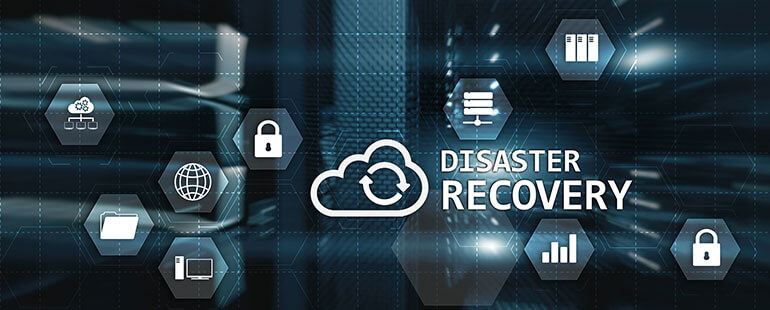What is Your Disaster Recovery Plan?
Streamworks Blog

When a business collides with a disaster head-on, a few sobering statistics emerge:
• The United States experienced 20 disastrous weather events in 2021, each exceeding $1 billion in losses.
• FEMA reports that 40% of small businesses fail to reopen after a disaster.
• According to Forbes, "nearly two-thirds of SMBs impacted by a fire, flood, hurricane, tornado or earthquake no longer exist 12 months later."
With these in mind, it's clear that all businesses need a contingency plan when disaster strikes. They need a Disaster Recovery Plan (DRP).
What exactly is a Disaster Recovery Plan? What are the purposes of a DRP? What should be in it, and how do you test it to ensure it will work? Let's answer these questions and more in this post.
Disaster Recovery Plan - Definition
Before defining a Disaster Recovery Plan, we should backtrack and talk about your Business Continuity Plan (BCP).
In a previous article, we wrote, "The business continuity portion of your Disaster Recovery Plan outlines how you will stay up and running during the emergency period."
In other words, BCPs are the main approaches you use for continuing normal, uninterrupted business operations in the face of disruption.
Your DRP, on the other hand, is a subset of your BCP. Indeed, part of business continuity planning is creating a Disaster Recovery Plan. Your DRP is the documented response process designed to minimize disruptions from disasters.
Like Business Continuity Plans, DRPs help you continue normal business processes. But unlike a BCP, Disaster Recovery Plans tend to focus only on the IT systems and network infrastructure.
Think of your DRP as your primary strategy for restoring systems and infrastructure following a disaster.
Disaster Recovery Plan - Purposes
To further detail the purposes of a DRP, we can look at three primary areas: prevention, continuity, and recovery.
Prevention
With prevention, we're looking at the pre-disaster timeframe.
To fully account for all the prevention details that make sense for your particular business, you need to do considerable pre-planning, so make sure you're giving it critical thought and discussion.
This pre-planning should minimize the impact of an actual disaster on systems and resources. Pre-planning also has the added benefit of maximizing your company's capability for recovering from a disaster.
When you let Streamworks handle your work, you'll take full advantage of the disaster prevention and pre-planning we've done.
For example, our hot DR site has power, internet connectivity, and key production equipment for meeting customer SLAs. In addition, our automated full weekly and daily backups are retained on-site and securely replicated offsite.
Continuity
Continuity deals with what happens during a disaster.
To prevent your whole business from crumbling, be sure to design continuity measures to safeguard, support, and maintain mission-critical resources and systems. With our hot DR site mentioned above, we've got you covered.
Recovery
Lastly, recovery is the post-disaster phase.
In this phase, map out all the steps needed to restore systems, resources, and processes to full operational status.
Ideally, your detailed planning in the prevention and continuity areas will lessen the need to deploy this section of your DRP fully. However, you'll have this part of the plan when needed in a worst-case scenario.
Along with our hot DR site and multi-layered backup strategy, we'll acquire additional equipment as needed depending on the severity of the disaster. Why? To keep your business moving forward.
Disaster Recovery Plan - Other Elements to Include
Since every business has distinct needs and priorities, each DRP will be unique based on your organization's specific requirements. That said, there are common elements each DRP should address.
As a tip, there's no need to reinvent the wheel here. Look at examples of other DRPs and use a template to get you started.
DRPs can cover many different areas, from safety to management succession to identifying critical vendors and partners. Remember, the main goal of a DRP is to enable your business to pull through in a disaster and continue normal business operations.
With that said, here are a few high-level items you might want to include:
• Identify vital systems and resources: Inventory critical systems and evaluate the impact in the event of downtime.
• Define Recovery Time Objectives (RTO): This is the targeted time you must restore your processes to avoid unacceptable consequences from a break in business continuity.
• Define Recovery Point Objectives (RPO): This is the maximum acceptable data loss before resuming normal business activities.
• Detailed procedures for recovery of each system and resource: You can also reference separate Standard Operating Procedures (make sure they're available in the event of downed internet or network connections)
• Detailed communication plan: With internal management and teams, critical vendors and partners, and customers
Testing
To ensure your Disaster Recovery Plan will work as designed, make sure you test it regularly. A good rule of thumb is to test it at least annually and more often if you have a higher probability of disasters striking.
At Streamworks, we test our DRP annually at a minimum. Not only that, we perform periodic testing of our restore processes in addition to testing throughout the course of normal operations.
Testing can range from the simple to the complex. Perform basic walkthroughs of your DRP and "tabletop" exercises for simple testing. Here, scenarios are presented, discussed, and evaluated in a meeting format.
For more complex testing, consider a simulation. You can also perform a full interruption test of your business environment, involving critical vendors and partners. Full interruption testing is comprehensive, but it can be expensive. Note: complex DRP testing can trigger an actual Disaster Recovery event, so be careful!
Regardless of the testing methods, make sure crucial objectives are tested, including recovery processes, documentation, recovery sites, and communications.
Conclusion
Don't let your business become another sad statistic. Shore up your Disaster Recovery Plan by detailing the prevention, continuity, and recovery phases. Include essential elements like system and resource inventory, RTO and RPO, and a detailed communication plan. Test your plan regularly to shore up weaknesses and capitalize on strengths.
Need help with your Business Continuity or Disaster Recovery planning? Don't wait until disaster hits to figure out how to deliver your mail.
Our BCP/DRP solutions include:
• Scheduled testing
• Dedicated storage for inventory and software
• SLA commitments
• Customized programs to fit your BCP needs
Contact us today to schedule your FREE 1-hour Business Continuity Plan consultation.




